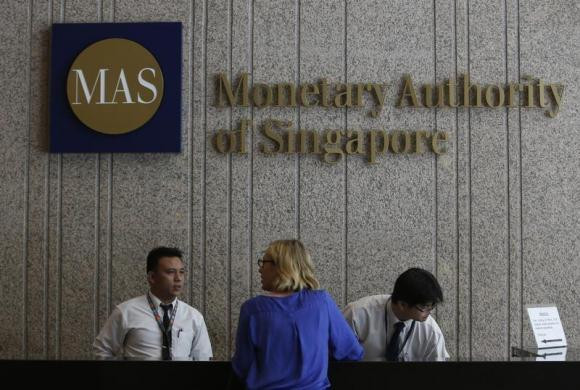Singapore Leaves Monetary Policy Unchanged

The Monetary Authority of Singapore has decided to maintain its policy of a modest and gradual appreciation of the S$-NEER policy band - the way the Singapore dollar is managed against a basket of its main traded currencies.
The MAS has left the slope and width of the policy band and the level at which it is centred.
The central bank said Singapore's economy should expand at a moderate pace in the coming quarters but core inflation will stay above its historical average with wage inflation relatively firm.
The upward pressure on inflation is due to food inflation and with businesses in some services sectors likely to further pass on cost increases even as the headline CPI inflation remains subdued, according to the semi-annual policy statement.
Singapore has a unique monetary policy of controlling domestic inflation by way of managing the exchange rate of the Singapore dollar with an undisclosed basket of currencies.
The MAS reviews policy every April and October on the 14th. In the April policy this year, the central bank had maintained its policy of a modest and gradual appreciation of the S$-NEER policy band.
In Tuesday's statement, the MAS said the S$NEER fluctuated within the upper half of the policy band over the past six years.
"The S$-NEER trended upwards from April to July alongside the positive investor sentiment in Asia but experienced downward pressures August to mid-September, dragged by geopolitical risks and increased likelihood of a sooner US rate hike."
However, it subsequently resumed a mild appreciation trajectory.
Singapore Dollar
The Singapore currency showed some strength on Tuesday but the policy did not seem to have any significant impact on it.
After the policy, the USD/SGD slipped to 1.2690 from Monday's close of 1.2720.
The USD/SGD pair has been forming a "higher lows-steady highs" pattern and has been stuck in a range of 1.2340-1.2862 over the past one and a half years.
The pair is now holding near the upper band as the sharp gains in the greenback have pushed the local unit to its weakest level in more than nine months by the first week of this month.
After hitting as high as 1.2826 on 3 October, the pair eased to 1.2675 by last Thursday and then moved almost sideways.
GDP Growth
According to the advance estimates released by the Ministry of Trade and Industry, Singapore's GDP expanded by 1.2% in Q3 2014 on a quarter-on-quarter seasonally adjusted annualised basis, following the 0.1% contraction in Q2.
"The manufacturing sector turned around but services growth was muted. Sentiment-sensitive segments within the finance & insurance sector also saw some sequential pullback due to the escalation of geopolitical tensions in Ukraine."
The continued improvement in global demand should provide some support to the external-oriented sectors of the Singapore economy, such as manufacturing and trade-related services, the MAS said.
"The domestic-oriented healthcare and education sectors will stay resilient on the back of strong underlying demand, though other services industries that are reliant on labour and face greater competition could experience profit margin pressures."
On balance, real GDP is projected to grow by 2.5–3.5% in 2014 and should maintain a broadly similar pace of expansion next year.
© Copyright IBTimes 2025. All rights reserved.






















